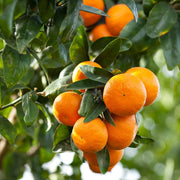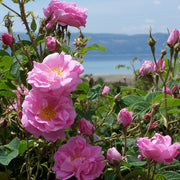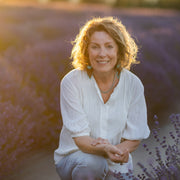Chances are good that at some point you may have heard about the remarkable things essential oils can do. After all, that's probably why you've come here, right? But, perhaps, you don't really know what an essential oil is, precisely. Don't worry, you are not alone. It is a common question we at Aromatics International hear all the time!
So what is an essential oil?
According to the dictionary, an essential oil is "a natural oil typically obtained by distillation and having the characteristic aroma of the plant or another source from which it was extracted". To simplify it even further, an essential oil is a highly concentrated oil of plant extracts. Either way, both definitions are just the tip of the iceberg when it comes to what an essential oil really is. So, let's explore a little deeper.
Nature, the ultimate source
Most plants have their own naturally occurring oils that can be found in their leaves, stems, fruits, fruit peels, seeds, flowers, roots, wood, and/or resins. Those oils serve specific biological purposes. For example, the oil in raw plant material can attract pollinators, repel and defend against harmful insects, protect against fungal and bacterial infections, and even prevent competing vegetation from growing too close (known as allelopathy). Fortunately for us, the use of certain oils can also have profound benefits for humans. Cultures all over the world have been using oils from many plants - both in physical applications and in aromatherapy - for medicinal and therapeutic purposes from our earliest known history through today.

So how do we get the oils out of the plants and into the form of the pure essential oils we use today? There are a number of methods used to extract the precious and highly aromatic oils from their plant parts, with the most common method of extraction being steam distillation. Other common extraction methods include cold-pressing or solvent extraction of the botanical material. The distilling process creates a much higher concentrated oil than that which occurs in the plant itself.
Most people don't realize just how concentrated pure essential oils really are. For instance:
- Sweet Orange essential oil requires roughly 14 Oranges to produce 1 - 15 mL bottle of product.
- Lavender essential oil requires over 200 pounds of plant material to yield 1 pound of lavender oil.
- Rose essential oil requires roughly 5,000 pounds of rose petals to yield 1 pound of essential oil.
When you consider the varying amount of plant material required to produce different essential oils it becomes clear why certain essential oils are considered more precious than others. By looking at the numbers above it becomes obvious why rose essential oil costs more to produce than the equivalent volume of orange essential oil. The more botanical material required to produce the essential oil products translates to more cost to the consumer. Fortunately, the old adage, "a little goes a long way", proves absolutely true with all essential oils.
We are able to get huge benefits from tiny amounts. Just a few drops can fill up a room with a plant's scent for hours. On that note, many people often wonder how smelling an essential oil can improve their quality of life. In the world of aromatherapy, aroma is important, but not the only aspect that makes essential oils so special. Simply put, each oil is comprised of chemical components that are unique to that specific plant. The therapeutic benefits of these components range anywhere from stress and anxiety reduction to cold and flu relief and pain and inflammation reduction. These chemical components also give the essential oils their unique aromas and properties.
FUN FACT: With some plants, two of the same plant (same genus and species) can have different chemical components and aromas depending on geographical location. That means the essential oils derived from rosemary, for example, in one part of the world can have different properties and benefits as that of rosemary from another region. Thyme is another example of a plant that has different chemical types - or chemotypes, as it is called - based on where it is from. Be aware of this when purchasing essential oils, though, as, with thyme, thyme ct thymol can be irritating on the skin while thyme ct linalool is gentler on the skin. On the flip side, citrus oils like lemon have no chemotypes, so it is the same no matter where it comes from. Cool, huh? While most of us would agree that we enjoy things that smell nice and make us feel good, essential oils do need to be used with caution.
Using pure essential oils safely
Because essential oils are extremely concentrated extracts, it is important to know how to use them safely. Using some essential oils at full concentration can lead to adverse reactions such as skin irritation, nausea, headaches, phototoxicity, or sometimes even serious allergic reactions. That doesn't mean you can't use any oil straight, though.
Some popular essential oils can be used directly on the skin such as using a single drop of lavender oil directly on a bee sting. In fact, it is a very wise practice to dilute, as diluting with a carrier oil such as jojoba oil helps prevent sensitivity to an essential oil as well as help with transport of the essential oil. Not to mention you'll get more bang for your buck since you won't go through oil so quickly! Additional caution should be used when using essential oils on children! Children lack the ability to metabolize chemicals as quickly or efficiently as adults. Even inhaling essential oils like tea tree can be overwhelming for kids. Because essential oils are highly concentrated chemicals, albeit natural, they can cause problems with young children who are still rapidly developing.
Here are a few tips from us regarding adding essential oils to blends for children:
- Children under 5: It is best to avoid the use of essential oils entirely. Instead, we recommend using hydrosols in place of essential oils, as they are much gentler. If you want to learn about hydrosols, check out our recent blog.
- Children between the ages of 5 and 10: It is best to use a 1% dilution when applying essential oils topically. We'll get into recommended dilutions in this blog, so keep reading to find out more.
- While there are some great essential oils to use with children, it is best to stay away from essential oils containing chemotype 1,8-cineole. This would include essential oils such as eucalyptus, saro, ravintsara, and tea tree oils. The use of harsher essential oils such as cinnamon, tulsi, and clove bud should be avoided.
Regardless, it is always a good idea to check the safety info on each oil you want to try before using them. A great resource for doing so is the book, The Heart of Aromatherapy, by Andrea Butje. It not only has a wealth of information about essential oils including their safety tips, but it also has numerous recipes for all kinds of blends for a variety of purposes and uses.
What are essential oils good for?
Essential oils have a wide range of uses and benefits, including:
- Aromatherapy: Many essential oils work in aromatherapy to promote relaxation, relieve stress and anxiety, and improve mood.
- Skincare: Essential oils are often used in skincare products due to their anti-inflammatory and antimicrobial properties. They can help to reduce inflammation, acne, and other skin conditions. They are especially helpful when paired with a carrier oil such as coconut oil.
- Pain relief: Some essential oils, such as peppermint oil and lavender oil, have analgesic properties that can help to reduce pain and discomfort.
- Household cleaning: Essential oils can be used to create natural cleaning products that are effective at killing bacteria and other germs.
- Haircare: Essential oils can be used in haircare products to promote hair growth, reduce dandruff, and improve scalp health.
- Bug repellent: Some essential oils, such as citronella and eucalyptus, are effective at repelling insects and can be used as a natural alternative to chemical bug sprays.
The widespread use of essential oils has resulted in lots of varied applications, but we here at Aromatics International have a few we think are the safest and most beneficial. It is important to remember that essential oils are powerful and deserve caution and understanding to be used to their fullest. For this reason, we do not suggest you ingest essential oils as without proper training this can easily cause an allergic reaction or other adverse health effects.
Best essential oil uses

Here at Aromatics International, some of our favorite ways to use essential oils are:
- Topically diluted in a carrier oil
- In an aromatherapy inhaler
- In essential oil diffusers
- In natural cleaning products
- 1% dilution: 5-6 total drops of essential oil in each ounce of carrier oil or cream. This dilution is ideal for children, older folks, chronically ill persons, and pregnant women.
- 2% dilution: 10-12 total drops of essential oil in each ounce of carrier oil or cream. This dilution is used for the average adult and daily or long-term use of the product.
- 3% dilution: 15-18 total drops of essential oil in each ounce of carrier oil or cream. This dilution is used for specific illnesses or for acute injury. Blends made at this dilution are used for a week or two, for an acute situation.
How much oil should you use for aromatherapy?
Now that you know more about what an essential oil is and just how concentrated it is, you may be wondering how much you should you use in your aromatherapy blend(s). Below are some common considerations to keep in mind when using essential oils with their various methods of use.
In a personal inhaler:
- Place 15-18 drops of essential oils on a smaller cotton wick.
- Place 18-21 drops of essential oils on a larger cotton wick.
- Bath salts: Mix the essential oils into a bath salt. Add 8-10 drops of essential oil to each ounce of salt. Use 1 Tablespoon of that blended salt in a full bath.
- Milk: Add 3-4 total drops of essential oil to a cup of milk. Add the milk to your full bath.
- Jojoba oil or other liquid carriers: Add 3-4 drops of essential oil to 1 tablespoon of jojoba oil and add to your full bath.
- Add 4-6 drops of essential oils in a small diffuser along with the necessary amount of water required by your diffuser (Most diffusers will have a fill line indicating the appropriate amount of water that is required).
- Add 8-10 drops of essential oils in a large diffuser along with the necessary amount of water required by your diffuser.
Considerations When Purchasing Essential Oils:
When researching a company to purchase your essential oils from make sure to ask specific questions such as:
- Are the essential oils single origin? You do not want essential oils that have been mixed together from separate batches to make one large batch.
- Are the essential oils organically crafted? This could mean certified organic, organically grown, and/or wild crafted.
- Are the essential oils 100% pure? Have they been GC/MS tested? (Gas Chromatography/Mass Spectrometry testing provides a breakdown of the chemical components in essential oils. This can confirm purity. Some companies provide this information on all their essential oils either on their website or via request. This is the best way to avoid the addition of synthetic chemicals.)
- Are the plants ethically and sustainably harvested?
Want to learn more?
For more information on essential oils and aromatherapy blending, the Aromahead Institute has a variety of aromatherapy courses to choose from. To get started, their "Aromatherapy 101 Course" course is free and contains lots of valuable information! "Feeling educated about essential oils is such an empowering experience because there are so many different oils you can work with. They all offer the nourishment of the plant they are distilled from in a single drop, and education helps you understand which oils to reach for at which times. Nature works holistically... and so do we. When nature touches one area of your life, you can feel it in many others. Essential oils demonstrate this in a big way. I believe that aromatherapy is a gateway into a broader understanding of traditional healing, and a path toward healthy living." Andrea Butje, The Heart of Aromatherapy.
Questions or comments?! Please email us at: team@aromatics.com!










